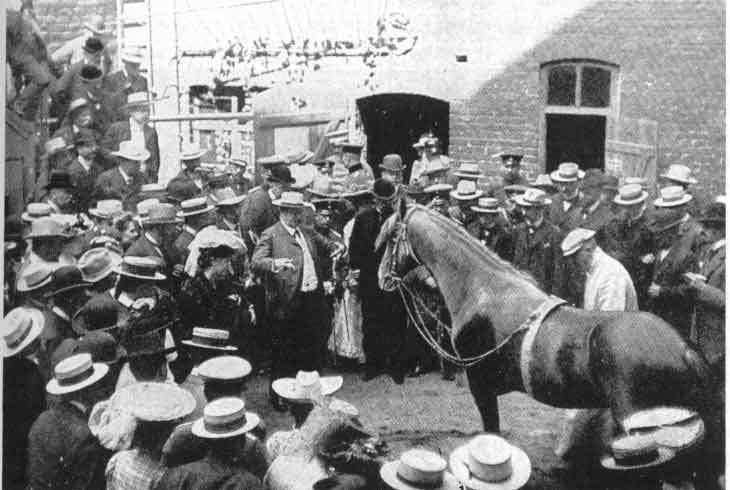 | ||
A talking animal or speaking animal is any non-human animal that can produce sounds or gestures resembling those of a human language. Several species or groups of animals have developed forms of communication which superficially resemble verbal language, however, these are not defined as language because they lack one or more of the defining characteristics, i.e. grammar, syntax, recursion and displacement. Researchers have been successful in teaching some animals to make gestures similar to sign language. However, these animals fail to reach one or more of the criteria accepted as defining language.
Contents
On imitation and understanding
The term refers to animals which can imitate (though not necessarily understand) human speech. Parrots, for example, repeat things nonsensically through exposure. It is an anthropomorphism to call this human speech, as it has no semantic grounding.
Clever Hans was a horse that was claimed to have been able to perform arithmetic and other intellectual tasks. After formal investigation in 1907, psychologist Oskar Pfungst demonstrated that the horse was not actually performing these mental tasks, but was watching the reaction of his human observers. The horse was responding to involuntary cues in the body language of his trainer or other people who asked the horse questions and knew the answer but were unaware they were providing such cues.
On formality of animal language
A "formal language" requires a communication with a syntax as well as semantics. It is not sufficient for one to communicate information or even use symbols to communicate ideas.
Researchers have attempted to teach great apes (gorillas, chimpanzees, and bonobos) spoken language with poor results, and sign language with significantly better results. However, even the best communicating great ape has shown an inability to grasp the idea of syntax and grammar, instead communicating at best at the same level as a pidgin language in humans. They are expressive and communicative, but lack the formality that remains unique to human speech.
Modern research shows that the key difference is the animal's lack of asking questions and that formal syntax is merely a superficial detail, however Alex the parrot has been recorded as having asked an existential question. There are other differences as well, including poor precision, as shown by Kanzi the bonobo used the lexigram for chase interchangeably with that for get, though this behavior may not be the same for all animals. Research supports the idea that the linguistic limitations in animals are due to limited general brainpower (as opposed to lack of a specific module), and that words are created by breaking down sentences into pieces, making grammar more basic than semantics. The statement that syntax is the key difference between human and animal language is dubious.
Birds
Dogs
An owner hears a dog making a sound that resembles a phrase says the phrase back to the dog, who then repeats the sound and is rewarded with a treat. Eventually the dog learns a modified version of the original sound. Dogs have limited vocal imitation skills, so these sounds usually need to be shaped by selective attention and social reward.
